I love tea. I really don’t know much about tea, despite loving to drink it so much, so Munnar was the perfect place to go to learn more about this wonderful drink. As our bus winded its way up and around the many hills on our 8 hour journey to Munnar (which included a minor crash. Involving us.), it was breathtaking to see the tea fields come into view as we finally made our approach. We heard the tea plants in Munnar described as carpet and this is the perfect description of what this looks like. And it is the most beautiful carpet, too.
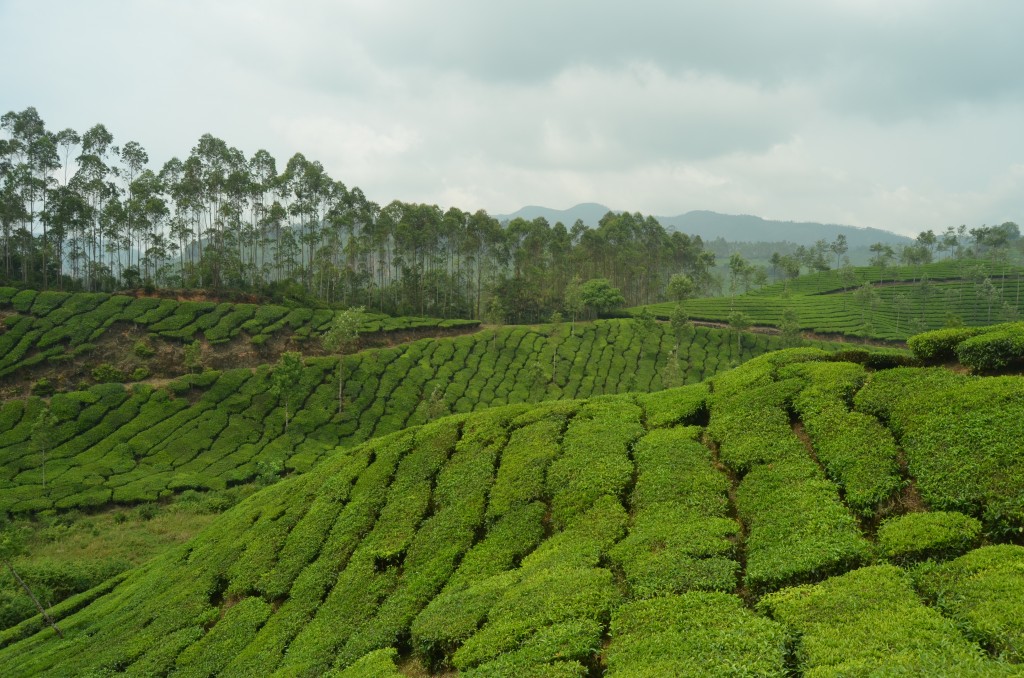
We stayed in a guesthouse called Zina Cottages right in the middle of a tea plantation with a beautiful view of “the highest mountain south of the himalayas”, which didn’t seem to be that impressive of a claim to fame to us, but the locals were very excited about it. We ended up doing a trek up into this tea plantation, which took us through the tea fields to the top of a ridge with a nice viewpoint, despite the rolling fog that kept getting in the way. This trek gave us the opportunity to get some great pictures of the landscape of Munnar.
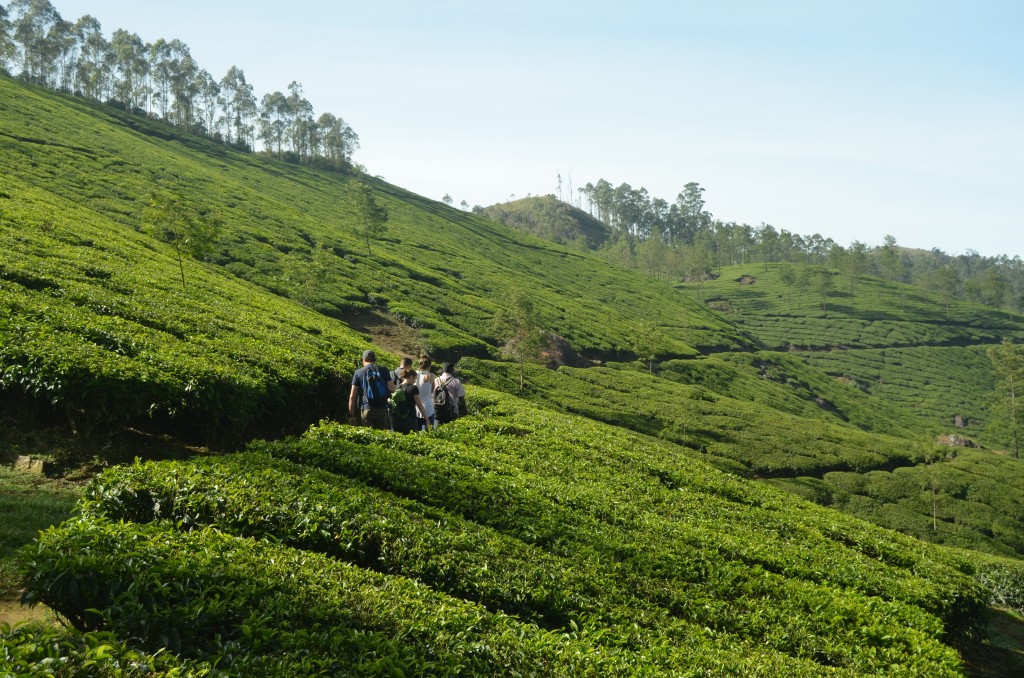
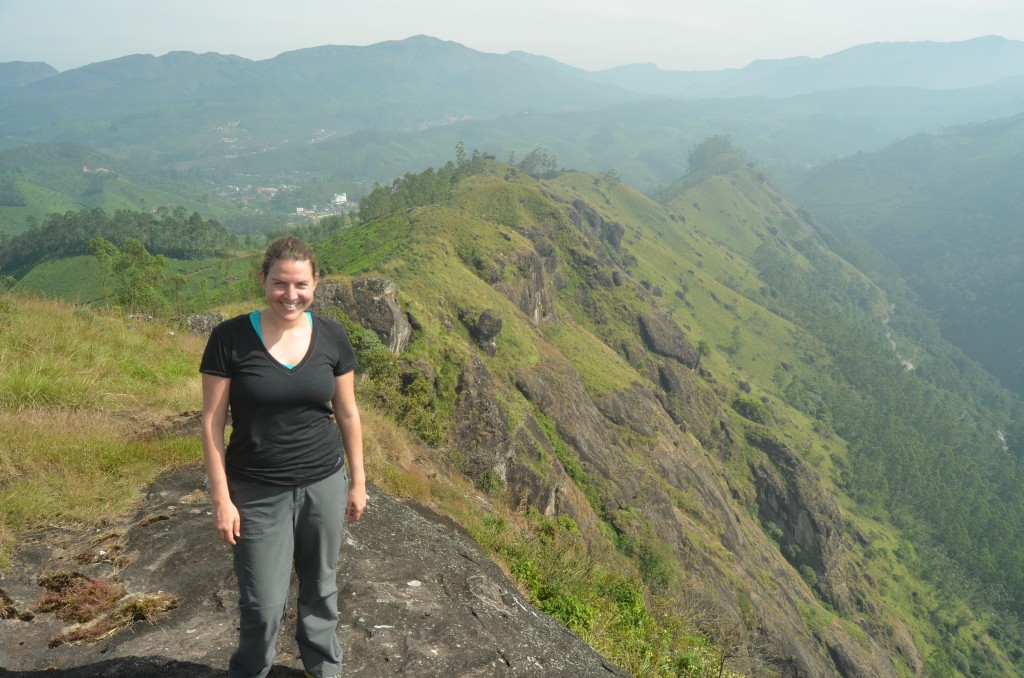
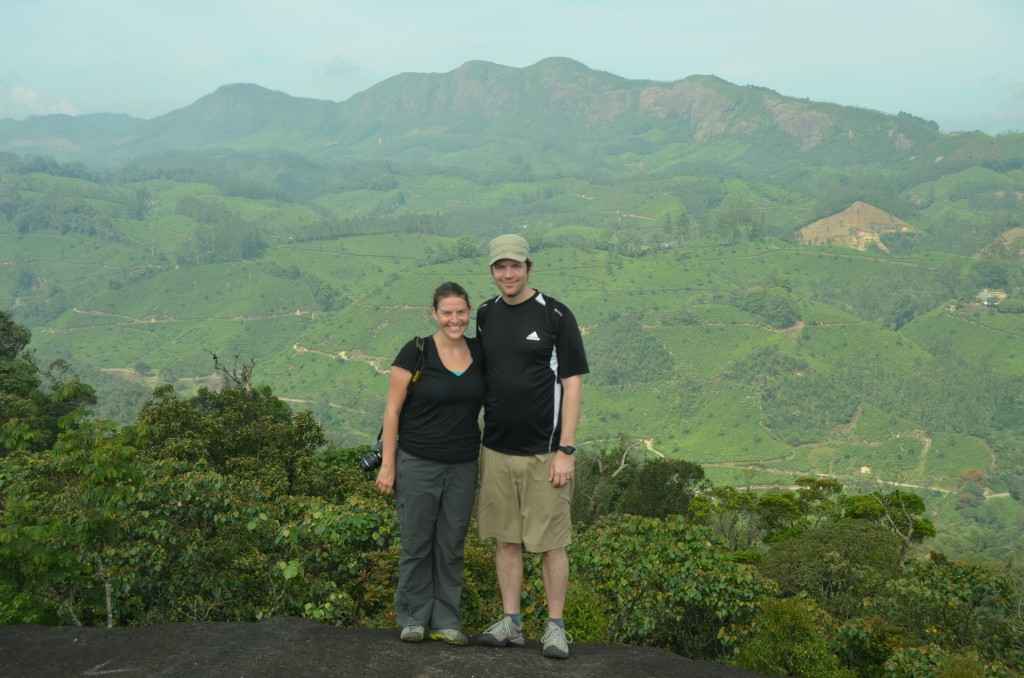
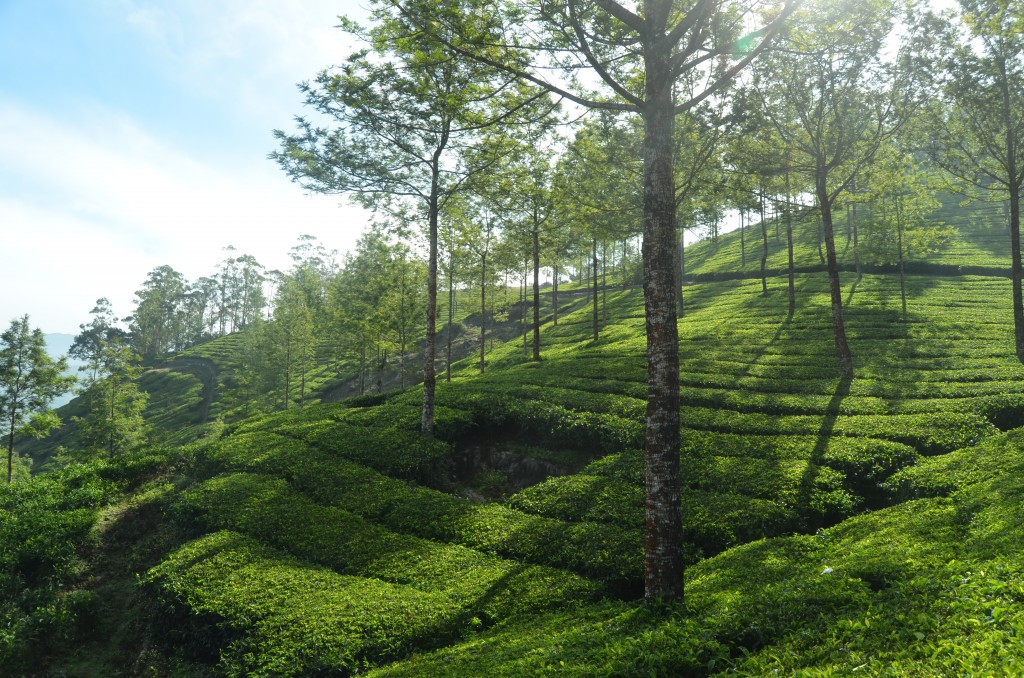
In addition to the trek, we also enjoyed staying in Zina Cottages because of something completely unexpected: communal, home cooked dinners. Unlike many guesthouses we stayed in throughout India, Zina Cottages does not have a restaurant, so we were anticipating needing to get dinner on our own every night. However, the night before we arrived, there was concern about guests going out after dark due to roaming wild elephants (!), so Velu, the manager, cooked everyone dinner. It seems that Velu does this whenever there is concern about leaving the place at night or he just feels like it, so we had the pleasure of this dinner for three out of the four nights we stayed there, even though there was no longer any danger of being trampled by wild elephants. It was particularly nice that after learning we were vegetarians, every meal afterward was completely meat free. Brian also learned how to make chapati, a type of bread, and prepared this with Velu a couple of nights.
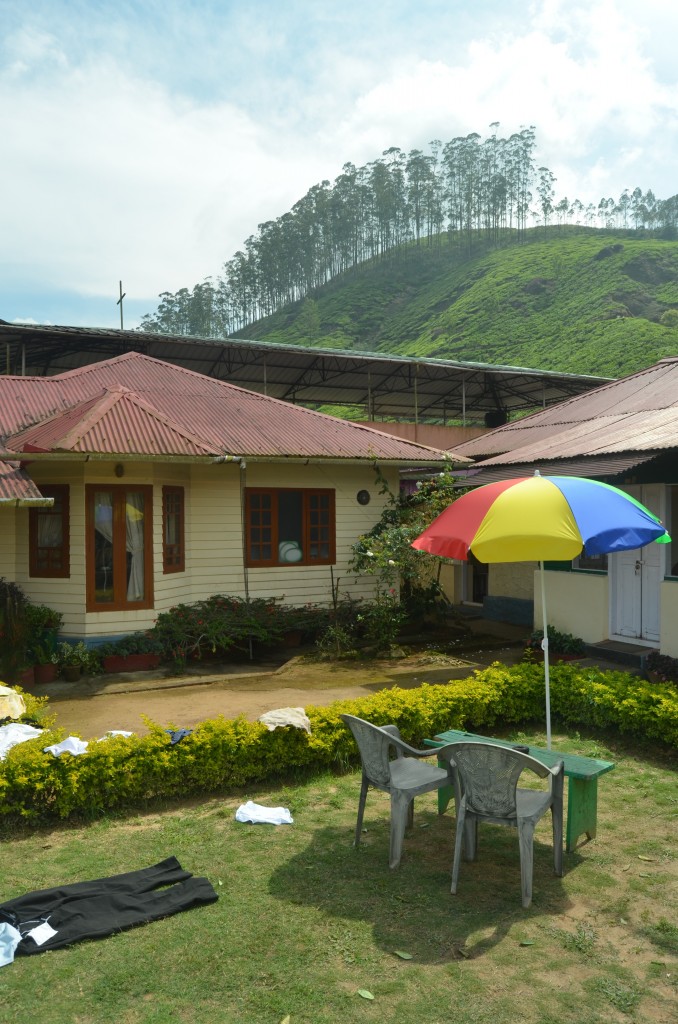
These communal dinners also enabled us to get to know the other people staying here, some of whom we really liked (a Canadian couple in their 60s doing a cycling tour of India–extremely inspiring!; a German man named Manfred who is taking a government entitled year off of his teaching job to travel the world) and some we didn’t like as much (a German man who despite this being his third trip to India seemed to have nothing good to say about the place or the people here.) But I digress–back to the tea!
While none of the tea plantations in Munnar do official tours to learn about how the tea is picked and processed, there is a museum that explains the history of tea in the region and how it goes from plant to cup. It turns out that tea plants are actually trees whose tops are cut off so that they look like shrubs. If they aren’t cut, they will grow as tall as 52 feet! We also learned how to pick tea: “Two leaves and a bud” is the mantra for identifying the top part of the plant that gets used for tea. Most of the tree is unused.
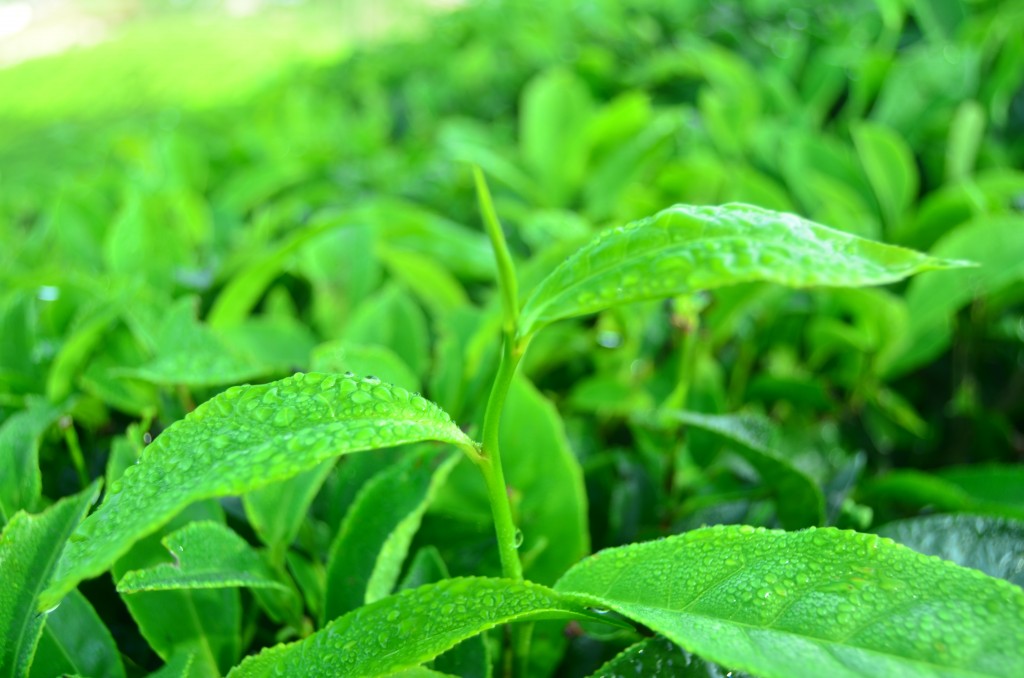
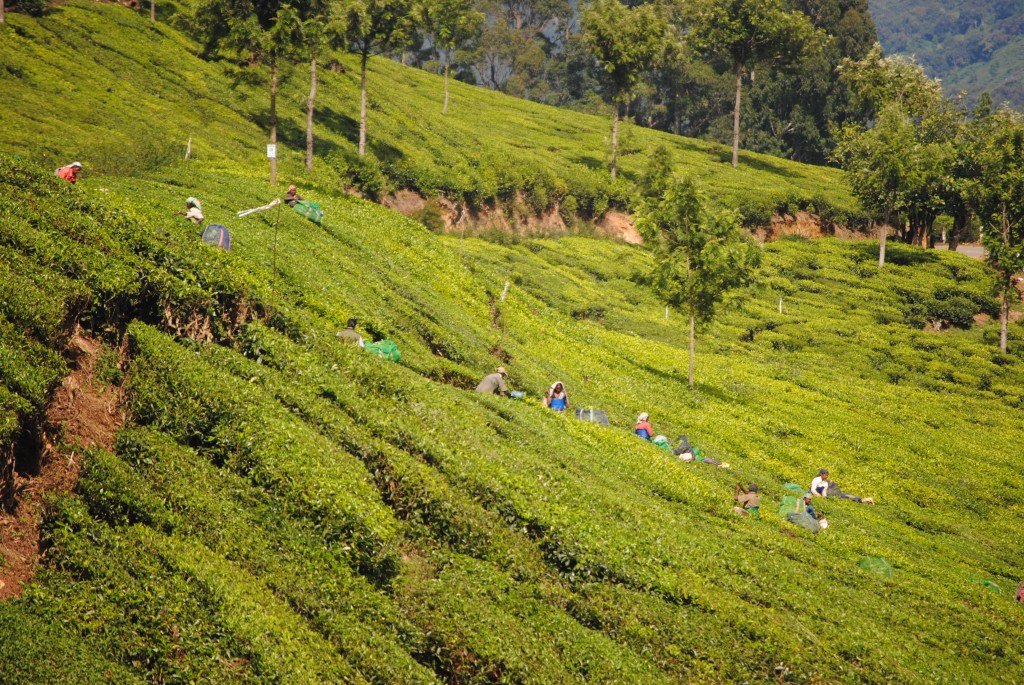
The town of Munnar itself is a scruffy little place (I believe I may have stolen that term from the guidebook), but Brian thought that it felt like a Western frontier town in the US: “It reminded me of the small mining towns in Colorado that we used to pass through on our summer vacations, just without the abandoned mine up on the hill. There was something about the lone crappy road, the mountains surrounding it, and the fact that it was all based around a single industry. It felt strangely comfortable and I think that’s probably why. It’s a frontier town that’s still alive.” We also found a great little restaurant in town that serves all-you-can eat Southern thalis for $1. Thalis are platters of several different types of curries served with some type of bread and rice. I came to love thalis in India, because of the variety of food you get. I wish they were more common in American Indian restaurants.
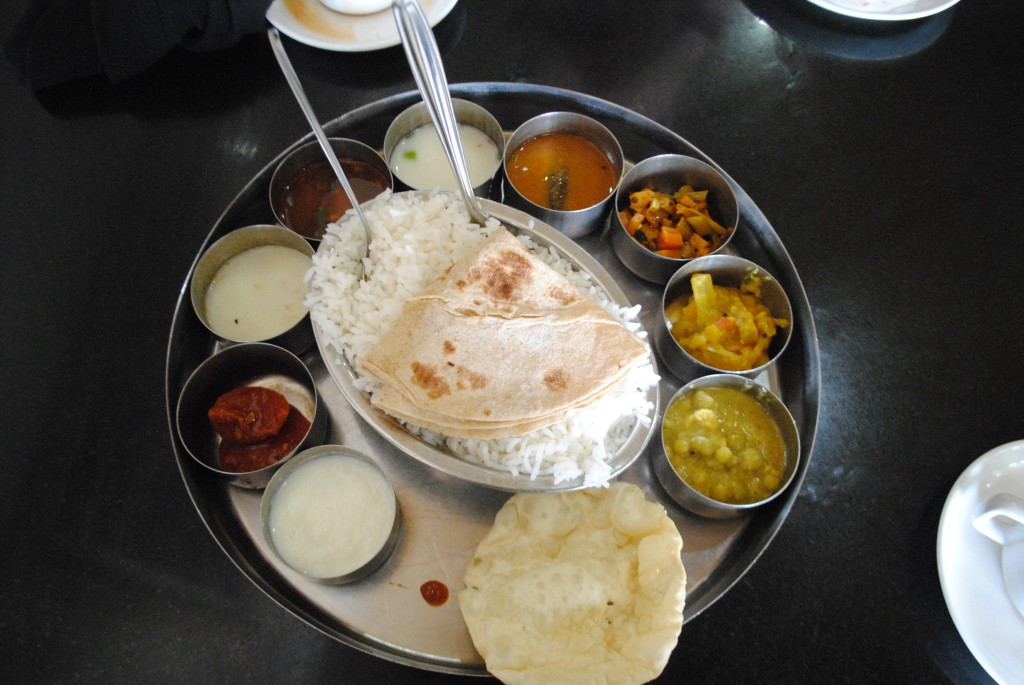
One interesting thing we saw more clearly traveling to and throughout Munnar is how heavily Christian Kerala is. While across India only about 2% of people are Christian, in Kerala almost 20% of people are Christian. What is so unusual about Christianity in Kerala, though, is it is not the work of modern day missionaries. Instead, it is believed that St. Thomas, one of Jesus’ twelve disciples, came here within a few years after Jesus died to teach the gospel. Even if it was not Thomas himself, it is clear that a Christian missionary came here directly from Judea within one hundred years of Jesus’ death and is responsible for the Christianity here. This means that the Christianity in Kerala predates that in Europe! On our bus ride up, we saw church after church (and very little else as far as places of worship), usually painted in a neon color (pink and orange were typical) with a large colorful statue of Jesus or Mary on top or prominently displayed. We also saw a lot of stores and other places of business use something Christian in their names.
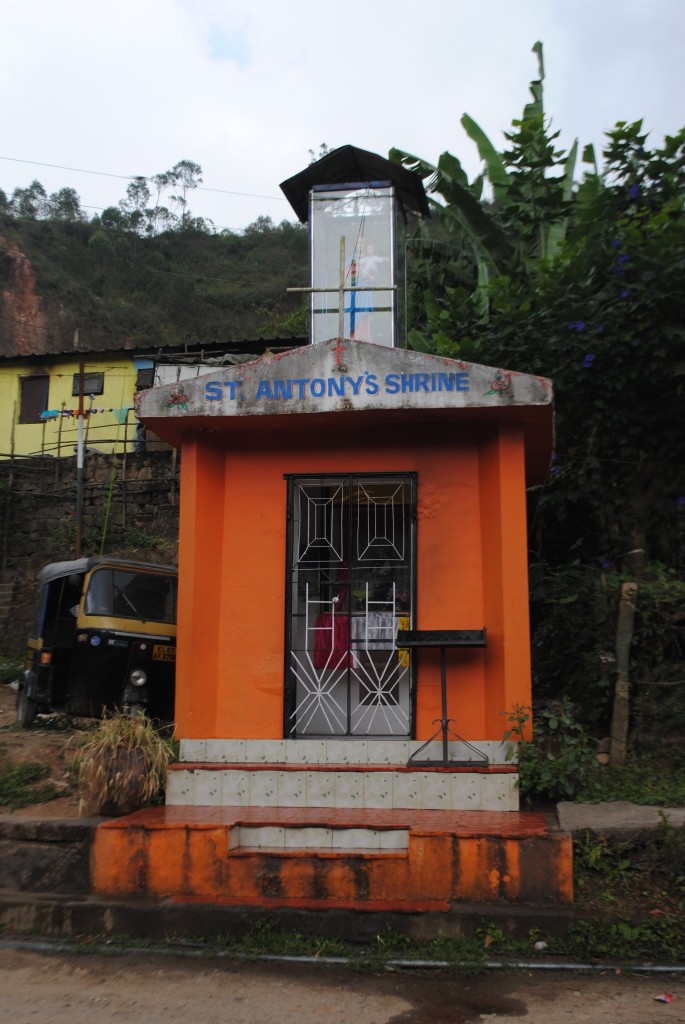
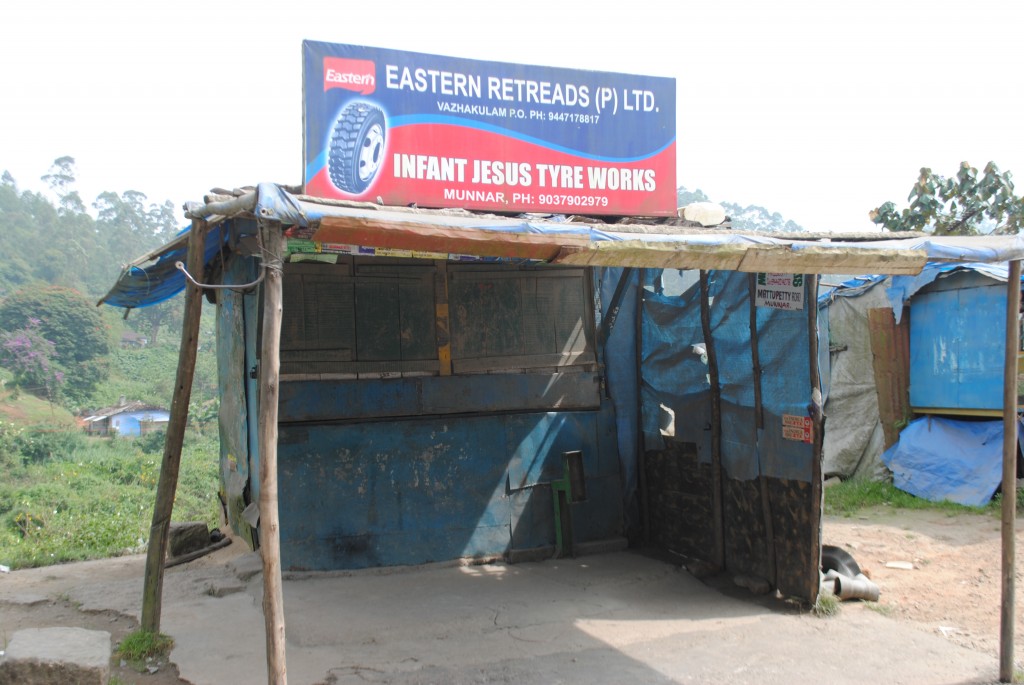
Since this is my last post on India, I want to close with one of my favorite experiences here, which I think just so completely typifies Indian people. We had just gotten onto a completely packed bus headed towards Munnar–meaning we literally squeezed onto the bus and Brian could barely get in all the way for the door to close–and it was really difficult for us to stand with our large backpacks. I had put mine in between my legs and was struggling to remain standing and keep my bag from falling over at the same time, which was surprisingly difficult to do even though I was buoyed on both sides by large Indian men. A little old man was sitting on the edge of the seat in next to me and gestured that he wanted to take my bag and put it by his feet to help me out. Now, on crowded Indian buses, it’s not always a blessing to have a seat–they squeeze three onto a seat and there is very little leg room in front of you. Despite this, however, the man took my bag and placed it in front of his legs, forcing him to squish his legs off to one side. It looked extremely uncomfortable, but I was extremely grateful as I was expecting to stand for a long time. After about an hour of standing I finally managed to get a seat right across from the kind old man and looked over to get my bag so the man could finally stretch out his legs. I was so surprised to see that even though I now had a seat, he was obviously quite content to continue helping me out by keeping my bag between his legs so that I wouldn’t be uncomfortable. I felt too bad to let him do this and took the bag from him, but thanked him profusely for his help. This story was just one of many where Indian people we met along our journey did extremely nice and generous things for us without hesitation or being asked. It was just so obvious that doing those types of nice things for people is part of who they are and this will always be my favorite thing about India that I will never forget.
5 responses to “Drinking Tea in Munnar”
Oh these blogs – they are so fabulous, filled with interesting stories, great info, your personal take on what you’re experiencing, and beautiful photos. I’ve never seen a picture of tea fields. The cottage is sweet … I can almost smell the eucalyptus … and that’s wild about the elephants! Would be fascinating to see (maybe from a window)
XOX
Thanks Mom! I’m glad they are making you feel like you are traveling with us. 🙂
What a find-that charming cottage in the middle of the beautiful and lush green tea fields!! You and Brian are both such effortless bloggers-I love sharing in the journey and learning so much along the way 🙂
Effortless meaning natural-lol!!
Ha ha, thanks for the compliment! Since this whole thing was Brian’s idea, I’m surprised myself by how much I’m enjoying doing this! 🙂